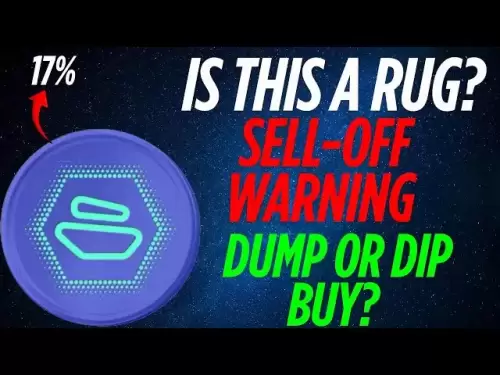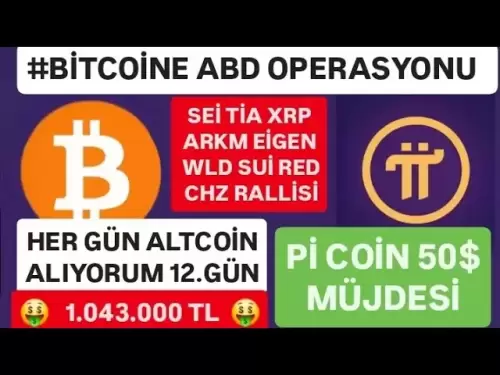-
 Bitcoin
Bitcoin $108,708.8110
0.60% -
 Ethereum
Ethereum $2,561.6057
1.91% -
 Tether USDt
Tether USDt $1.0001
-0.03% -
 XRP
XRP $2.2795
0.57% -
 BNB
BNB $662.2393
1.00% -
 Solana
Solana $153.1346
3.74% -
 USDC
USDC $1.0000
0.00% -
 TRON
TRON $0.2877
0.97% -
 Dogecoin
Dogecoin $0.1710
3.93% -
 Cardano
Cardano $0.5871
1.61% -
 Hyperliquid
Hyperliquid $39.6663
1.68% -
 Sui
Sui $2.9032
0.79% -
 Bitcoin Cash
Bitcoin Cash $496.1879
1.71% -
 Chainlink
Chainlink $13.5807
3.01% -
 UNUS SED LEO
UNUS SED LEO $9.0777
0.61% -
 Stellar
Stellar $0.2514
4.51% -
 Avalanche
Avalanche $18.1761
1.86% -
 Shiba Inu
Shiba Inu $0.0...01173
1.72% -
 Toncoin
Toncoin $2.8010
-4.23% -
 Hedera
Hedera $0.1594
3.21% -
 Litecoin
Litecoin $87.0257
-0.53% -
 Monero
Monero $319.1217
1.79% -
 Polkadot
Polkadot $3.3853
0.68% -
 Dai
Dai $0.9999
-0.01% -
 Ethena USDe
Ethena USDe $1.0003
0.02% -
 Bitget Token
Bitget Token $4.3420
-0.97% -
 Uniswap
Uniswap $7.3772
1.39% -
 Aave
Aave $286.6277
5.61% -
 Pepe
Pepe $0.0...09994
2.33% -
 Pi
Pi $0.4589
1.76%
How to avoid slippage on Bitfinex?
To minimize slippage on Bitfinex, use limit orders, monitor market liquidity, set stop-loss orders, trade during less volatile times, and split large orders into smaller ones.
Apr 23, 2025 at 09:43 pm

Slippage is a common issue faced by traders on cryptocurrency exchanges like Bitfinex. It occurs when there is a difference between the expected price of a trade and the price at which the trade is actually executed. This can happen due to market volatility or low liquidity. To minimize slippage on Bitfinex, traders can employ various strategies and tools. Let's explore some effective methods to help you avoid slippage on this platform.
Understanding Slippage on Bitfinex
Slippage occurs when the price at which a trade is executed differs from the price at which it was intended. On Bitfinex, this can happen during times of high volatility or when there is insufficient liquidity in the market. Understanding the factors that contribute to slippage is crucial for developing strategies to mitigate its impact.
Using Limit Orders to Control Slippage
One of the most effective ways to avoid slippage on Bitfinex is by using limit orders. Unlike market orders, which execute at the best available price, limit orders allow you to set a specific price at which you want your trade to be executed. This gives you more control over the execution price and helps minimize slippage.
- To place a limit order on Bitfinex, navigate to the trading interface and select the trading pair you want to trade.
- Click on the "Order Form" tab.
- Choose "Limit" from the order type dropdown menu.
- Enter the price at which you want your order to be executed in the "Price" field.
- Specify the amount of cryptocurrency you want to buy or sell in the "Amount" field.
- Click "Buy" or "Sell" to submit your limit order.
By using limit orders, you can ensure that your trades are executed at your desired price, reducing the risk of slippage.
Monitoring Market Liquidity
Market liquidity plays a significant role in determining the extent of slippage on Bitfinex. Higher liquidity means there are more buyers and sellers in the market, which can help reduce slippage. To avoid slippage, it's essential to monitor the liquidity of the trading pair you are interested in.
- Check the order book on Bitfinex to see the current buy and sell orders for the trading pair. A deeper order book with more orders at various price levels indicates higher liquidity.
- Use the depth chart to visualize the liquidity of the market. A thicker depth chart suggests better liquidity, which can help minimize slippage.
- Consider trading during times of high trading volume, as this typically correlates with higher liquidity and lower slippage.
By keeping an eye on market liquidity, you can make more informed trading decisions and reduce the impact of slippage on your trades.
Utilizing Stop-Loss Orders
Stop-loss orders can be another useful tool for managing slippage on Bitfinex. These orders are designed to limit potential losses by automatically selling a cryptocurrency when its price reaches a certain level. By setting a stop-loss order, you can protect yourself from significant price movements that could result in slippage.
- To set a stop-loss order on Bitfinex, go to the trading interface and select your trading pair.
- Click on the "Order Form" tab.
- Choose "Stop" from the order type dropdown menu.
- Enter the price at which you want the stop-loss order to trigger in the "Trigger Price" field.
- Specify the amount of cryptocurrency you want to sell in the "Amount" field.
- Click "Sell" to submit your stop-loss order.
Using stop-loss orders can help you manage risk and minimize the impact of slippage on your trades.
Trading During Less Volatile Periods
Market volatility is another factor that can contribute to slippage on Bitfinex. During periods of high volatility, prices can fluctuate rapidly, increasing the likelihood of slippage. To avoid this, consider trading during less volatile periods.
- Monitor market trends and news events that could impact the cryptocurrency market. Avoid trading during times when major announcements or events are expected, as these can lead to increased volatility.
- Use technical analysis tools to identify periods of lower volatility. Look for periods when price movements are more stable and less prone to sudden spikes or drops.
- Consider trading during off-peak hours when trading volume is lower, as this can result in less volatility and reduced slippage.
By trading during less volatile periods, you can reduce the risk of slippage and execute your trades more effectively.
Splitting Large Orders
When dealing with large orders, slippage can be more pronounced due to the impact of the order on the market. To minimize slippage, consider splitting large orders into smaller ones.
- Determine the total amount of cryptocurrency you want to buy or sell.
- Divide this amount into smaller, more manageable chunks.
- Place multiple limit orders at different price levels, ensuring that each order is small enough not to significantly impact the market.
- Monitor the execution of each order and adjust your strategy as needed.
By splitting large orders, you can reduce the impact of your trades on the market and minimize slippage.
Frequently Asked Questions
Q: Can I completely eliminate slippage on Bitfinex?
A: While it's not possible to completely eliminate slippage, you can significantly reduce its impact by using the strategies outlined above, such as using limit orders, monitoring market liquidity, and trading during less volatile periods.
Q: How does Bitfinex's fee structure affect slippage?
A: Bitfinex's fee structure can indirectly impact slippage by influencing trading volume and liquidity. Lower fees can attract more traders, increasing liquidity and potentially reducing slippage. However, the direct impact of fees on slippage is minimal compared to other factors like market volatility and order size.
Q: Are there any tools or indicators on Bitfinex that can help predict slippage?
A: Bitfinex does not offer specific tools or indicators designed to predict slippage. However, you can use the order book and depth chart to assess market liquidity, which can help you gauge the potential for slippage. Additionally, monitoring market volatility and using technical analysis can provide insights into when slippage is more likely to occur.
Q: How does the type of cryptocurrency affect slippage on Bitfinex?
A: The type of cryptocurrency can impact slippage due to differences in liquidity and volatility. More popular cryptocurrencies like Bitcoin and Ethereum typically have higher liquidity and lower volatility, which can result in less slippage. Less popular or newer cryptocurrencies may have lower liquidity and higher volatility, increasing the risk of slippage. Always consider the specific characteristics of the cryptocurrency you are trading when assessing the potential for slippage.
Disclaimer:info@kdj.com
The information provided is not trading advice. kdj.com does not assume any responsibility for any investments made based on the information provided in this article. Cryptocurrencies are highly volatile and it is highly recommended that you invest with caution after thorough research!
If you believe that the content used on this website infringes your copyright, please contact us immediately (info@kdj.com) and we will delete it promptly.
- BNB's Bullish Breakout: Riding the $600 Support Level Wave
- 2025-07-08 04:55:13
- Internet Computer, Live Stream, YouTube: What's the Buzz?
- 2025-07-08 04:30:12
- LILPEPE, Bitcoin, 2013: Meme Coin Mania or the Next Big Thing?
- 2025-07-08 04:30:12
- E-Load Super Blast: Sri Lanka's Prize Bonanza!
- 2025-07-08 02:30:13
- Pepe, Blockchain, and Presales: What's the Hype?
- 2025-07-08 03:50:17
- Crypto VC, DeFi Liquidity, and Kuru Labs: What's the Buzz?
- 2025-07-08 02:50:12
Related knowledge

How to recover a lost Binance account
Jul 07,2025 at 09:07pm
What Happens When a Binance Account Is Lost?Losing access to your Binance account can be a distressing experience, especially if you hold significant digital assets. This typically occurs due to forgotten login credentials, loss of two-factor authentication (2FA) devices, or compromised accounts. Understanding the exact reason behind losing access is cr...
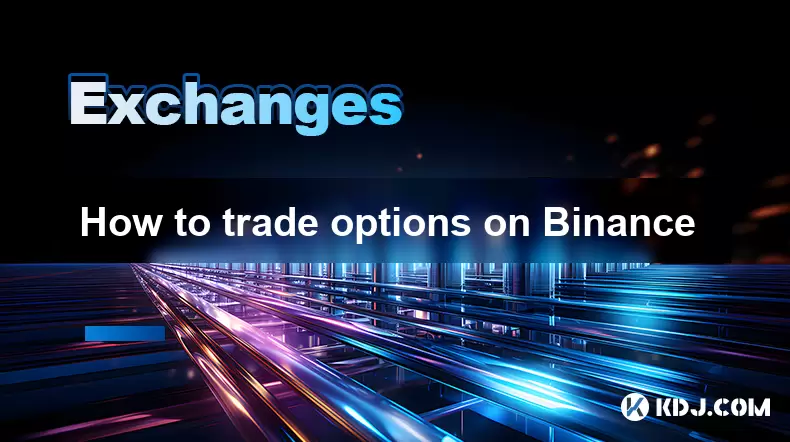
How to trade options on Binance
Jul 08,2025 at 04:35am
Understanding Options Trading on BinanceOptions trading allows investors to speculate on the future price of an asset without owning it. On Binance, users can trade crypto options, which are derivative contracts that give traders the right—but not the obligation—to buy or sell a cryptocurrency at a predetermined price before a specific date. This form o...

How to read Binance charts
Jul 07,2025 at 08:14pm
Understanding the Basics of Binance ChartsReading Binance charts effectively is essential for making informed trading decisions in the cryptocurrency market. Before diving into technical indicators and candlestick patterns, it's important to understand the basic layout of a chart on the Binance platform. The default chart interface displays price moveme...
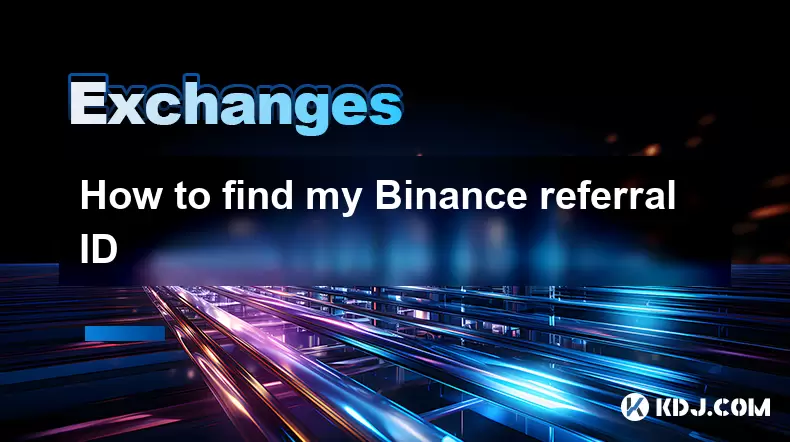
How to find my Binance referral ID
Jul 07,2025 at 06:29pm
What is a Binance Referral ID?A Binance Referral ID is a unique identifier assigned to each user on the Binance platform. This ID allows users to refer new traders to Binance and earn commissions from their trading fees. The referral program is an integral part of Binance’s ecosystem, encouraging community growth and rewarding active participants. Every...

Binance verification rejected why
Jul 07,2025 at 06:57pm
Understanding Binance Verification RejectionIf your Binance verification was rejected, you're likely searching for answers on why this happened and how to resolve it. Binance, as one of the world's largest cryptocurrency exchanges, requires users to complete identity verification to comply with Know Your Customer (KYC) regulations. When a verification r...
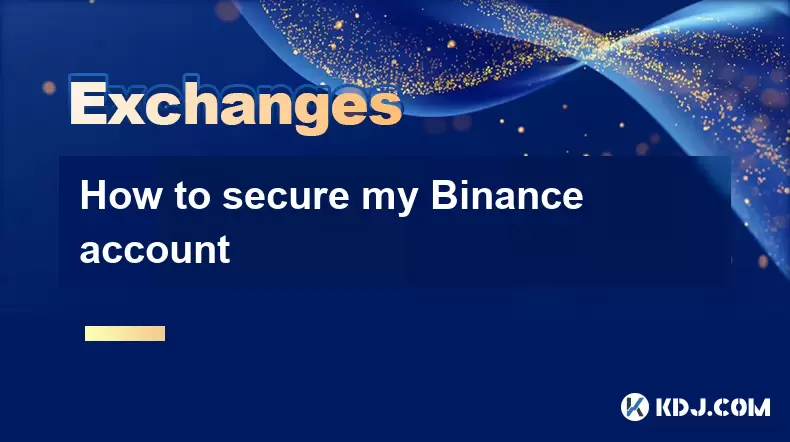
How to secure my Binance account
Jul 08,2025 at 02:15am
Enable Two-Factor Authentication (2FA)Securing your Binance account starts with enabling Two-Factor Authentication (2FA), which adds an extra layer of security beyond just your password. The most secure method is using an authentication app like Google Authenticator or Authy. To set this up, navigate to your Binance profile settings and select the Secur...

How to recover a lost Binance account
Jul 07,2025 at 09:07pm
What Happens When a Binance Account Is Lost?Losing access to your Binance account can be a distressing experience, especially if you hold significant digital assets. This typically occurs due to forgotten login credentials, loss of two-factor authentication (2FA) devices, or compromised accounts. Understanding the exact reason behind losing access is cr...

How to trade options on Binance
Jul 08,2025 at 04:35am
Understanding Options Trading on BinanceOptions trading allows investors to speculate on the future price of an asset without owning it. On Binance, users can trade crypto options, which are derivative contracts that give traders the right—but not the obligation—to buy or sell a cryptocurrency at a predetermined price before a specific date. This form o...

How to read Binance charts
Jul 07,2025 at 08:14pm
Understanding the Basics of Binance ChartsReading Binance charts effectively is essential for making informed trading decisions in the cryptocurrency market. Before diving into technical indicators and candlestick patterns, it's important to understand the basic layout of a chart on the Binance platform. The default chart interface displays price moveme...

How to find my Binance referral ID
Jul 07,2025 at 06:29pm
What is a Binance Referral ID?A Binance Referral ID is a unique identifier assigned to each user on the Binance platform. This ID allows users to refer new traders to Binance and earn commissions from their trading fees. The referral program is an integral part of Binance’s ecosystem, encouraging community growth and rewarding active participants. Every...

Binance verification rejected why
Jul 07,2025 at 06:57pm
Understanding Binance Verification RejectionIf your Binance verification was rejected, you're likely searching for answers on why this happened and how to resolve it. Binance, as one of the world's largest cryptocurrency exchanges, requires users to complete identity verification to comply with Know Your Customer (KYC) regulations. When a verification r...

How to secure my Binance account
Jul 08,2025 at 02:15am
Enable Two-Factor Authentication (2FA)Securing your Binance account starts with enabling Two-Factor Authentication (2FA), which adds an extra layer of security beyond just your password. The most secure method is using an authentication app like Google Authenticator or Authy. To set this up, navigate to your Binance profile settings and select the Secur...
See all articles

























